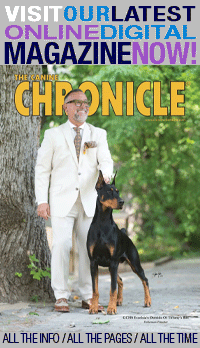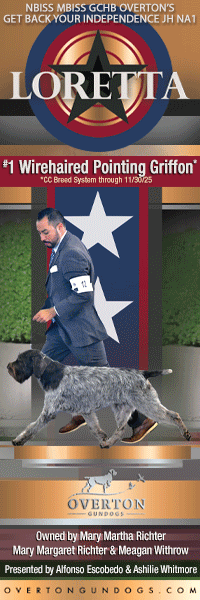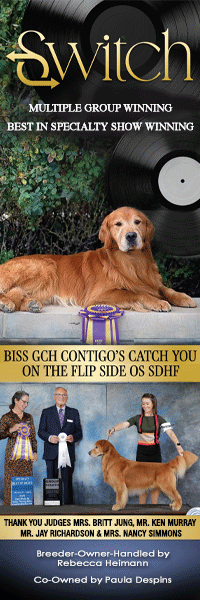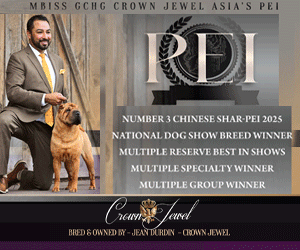Sophisticated Connoisseurship
To Read The Complete Article Click Here
By Dr. Gareth Morgan-Jones ·

In the firmament of purebred dog breeding and conformation competition, the matter of degrees of sophistication dictates how, to what extent, and at which level, each person participates. In all of this, expert knowledge, taste, and understanding quite obviously play a crucial part. Discrimination and appreciation of subtleties are also involved. Certain skills and individual virtuosity are additionally required. In order to be successful, clearly, one has to possess a particular commitment, a rare passion and, moreover, a specialized wherewithal needed for the purpose. Oftentimes appropriate means of interacting healthily with fellow members of the Fancy have an impact and play a critical part. Then there comes the central role which connoisseurship of the pedigreed dog itself plays. This essentially entails insightful understanding, in a historical context, of breeds; their lore, a body of traditions, and the nuances, those subtle shades of meaning, which characterize and epitomize their individual identity. The embodiment of a certain quality has to be recognized where it occurs and duly rewarded where deemed befitting.
Breeding choices should, ideally, be made on the basis of fundamental awareness of distinctive, and hence distinguishing, attributes and so should judging decisions. A connoisseur is one who actually enjoys with discernment and perceptiveness the subtleties of breeds as we know them at any one time and as they are developed and perfected. As we go about the business of breeding better dogs there has to be some intuitive understanding, respect for the past, as well as rational thought, in play. It is surely thereby that the integrity of our breeds can be maintained in perpetuity.

Connoisseurship can, of course, be practiced in various ways, to contrasting extents, and the focus can differ quite widely. Depth of awareness is in large part dependent upon degree of familiarity and experience. With this comes the cultivation of one’s taste and the refinement of one’s ability to perceive. When one is told that a particular individual prefers a certain style of dog within a given breed does this mean that said person has reached an advanced level of sophistication? Perhaps so is probably the best answer to this question. For some, this state of affairs can undoubtedly be reached almost subconsciously although adequate comprehension and extensive background are obviously required prerequisites. One has to, first of all, of course, acquire knowledge of the essential and unique characteristics of a breed. Only then can a mentally-conceived image of what is considered ideal be developed. An eye for detail and refined taste, in which there is some aesthetic content, are a part of the ingredients. An appreciation of beauty enters the equation. Instinct, intuition, and even some emotion, complement that which is based on intelligent reasoning. These interacting elements are essential. This facility has to be consciously cultivated and nurtured by continuous, long-term involvement. A sophisticated feel for a particular entity is not something which one acquires overnight; far from it. One has to become progressively aware of the character and nature of expert insight. This is always an ongoing, formative process. The mind has to undergo adaptation and the understanding has to be honed and enhanced over time.
Total perfection in anything is an elusive virtue and this has to be remembered when one goes about appreciating the merits of any purebred dog. This does not, however, preclude an uncompromising pursuit thereof by the fancier. There is always the hope that a faultless dog will be bred, one whose attributes can be considered to be truly exemplary and close to an imagined ideal. Everything in this regard is, of course, relative. The conceptualization of perfection on our part essentially has no limits and, in this sense, is infinite. Moreover, it can change over time. This is not something which can be described as being static. Although a preconceived ideal may be unattainable, the goal of achieving such remains an inspiring and forceful motivation. The true connoisseur, of course, recognizes that, in the case of the pedigreed dog, there are too many variables in operation, too many factors at play, which cannot possibly be controlled in unison. One can so readily aim to breed for particular characteristics and inadvertently compromise others in the process. A give and take condition, if you will, exists. This is in the very nature of things and is something with which we have to constantly contend. We are, it appears, always dealing here with relative values of comparative virtues. In the act of appreciation, while admiring the positive, one is invariably confronted with that which needs improvement. Hence our ongoing, but seemingly never-ending, preoccupation with betterment. In all of this there occurs a certain dynamic.

A fundamental starting point in the development of appreciation involves consideration of the requirements contained in breed standards. It is here; surely, that one’s connoisseurship must be firmly rooted. This is the very foundation upon which we build. Newcomers, especially, should always bear this in mind. There is really no substitute. But beyond this there lies that difficult to define and describe dimension, which involves each individual’s interpretation of what is called for in these instruments. Clarification and elucidation of meaning is involved and this requires some mental adeptness. It is here that the conceptualization of an ideal solidifies, where words are translated into a vision of that which is deemed perfect; of what the fundamentals are, of what constitutes the essence of a given breed. During the course of breed development and perfecting, changes inevitably occur and these have to be realistically accommodated within any concept that is formulated in the mind. A certain drift in one direction or other can readily occur and an awareness of this becomes very important. Everything has to be placed in appropriate perspective and in the context of a breed’s history and the purpose for which it was created. As I have suggested previously, on more than one occasion, this is oftentimes more easily said than done. In other words, one’s connoisseurship, however sophisticated it might be, can be severely tested in light of fluctuations in the condition of breeds. As I say, a certain impermanence is something which has to be reconciled within the larger scheme of things.
The true connoisseur of the pedigreed dog surely believes in the intrinsic resilience of our breeds. Beyond personal preferences there lies a substantial body of tradition, that which we sometimes refer to as lore. Although they might not quite reach the mythological order of things, our thoughts about our dogs can certainly, on occasion, approach the romantic; can appeal to the emotion by virtue of an imaginative potential and quality. How about ‘eyes gazing into the distance as if in memory of ages past’? A much too fanciful, or a perfectly realistic, if somewhat poetic, description? Individuals, as they develop and practice their connoisseurship, do so within a certain context. The degree of sophistication depends upon the extent of one’s ability to make distinctions, to be discriminating, to differentiate. In all of this there has to be the capacity to recognize that elusive element, so hard to explain precisely, which we call quality. Recondite, abstruse, esoteric; these are all words which can be used to describe that which is involved. And so it goes; we always return to the eye and the mind.
ABOUT THE AUTHOR
Gareth Morgan-Jones holds a Doctor of Philosophy degree from the University of Nottingham, England, and a Doctor of Science degree from his alma mater, the University of Wales. Now retired, he carries the title of Distinguished University Professor Emeritus at Auburn University, where he was a member of the faculty for thirty-eight years. He is approved by the AKC to judge Best in Show, the Hound and Toy Groups, sixteen Sporting breeds, and Pembroke Welsh Corgis. He can be reached at morgangj@charter.net.
Short URL: http://caninechronicle.com/?p=19330
Comments are closed











